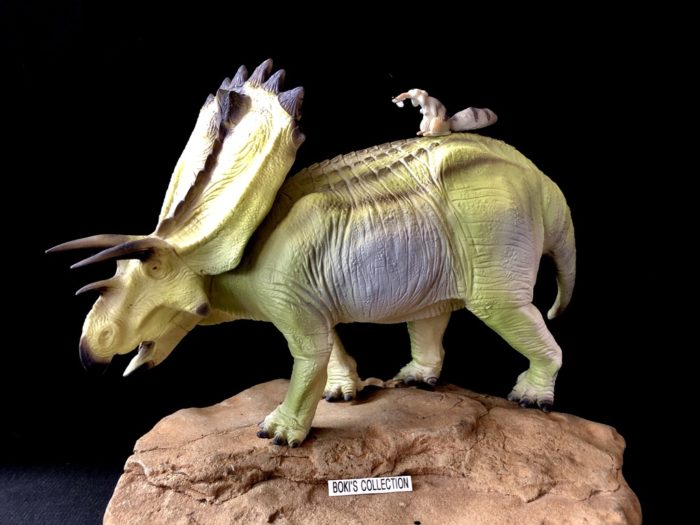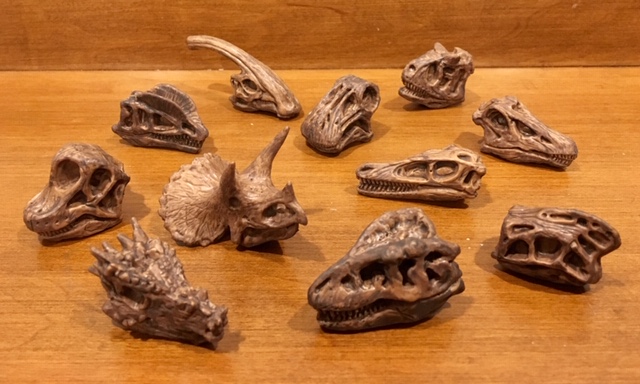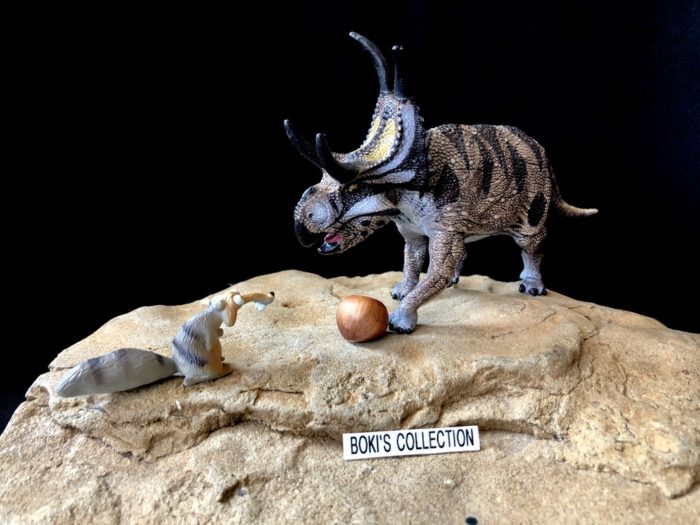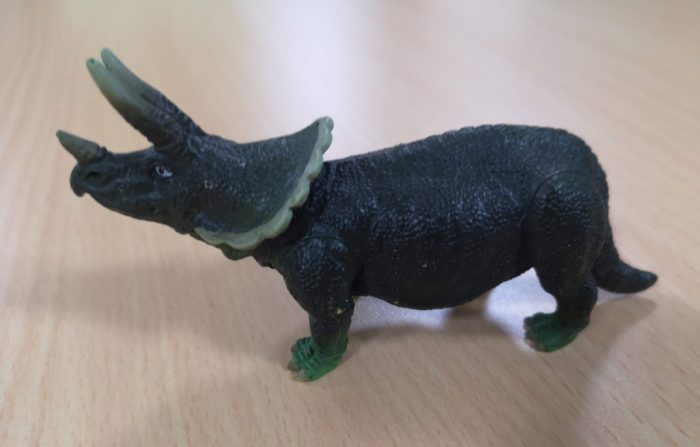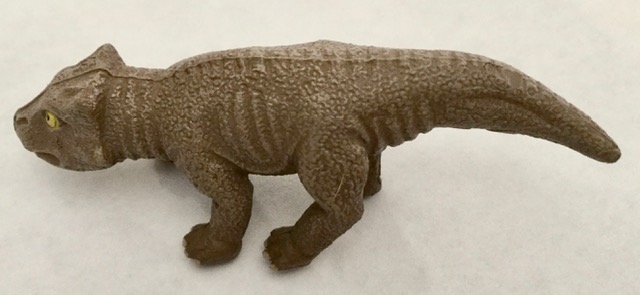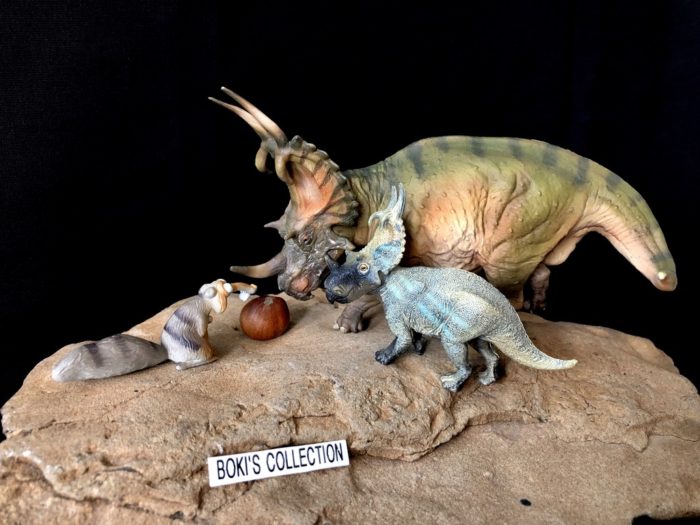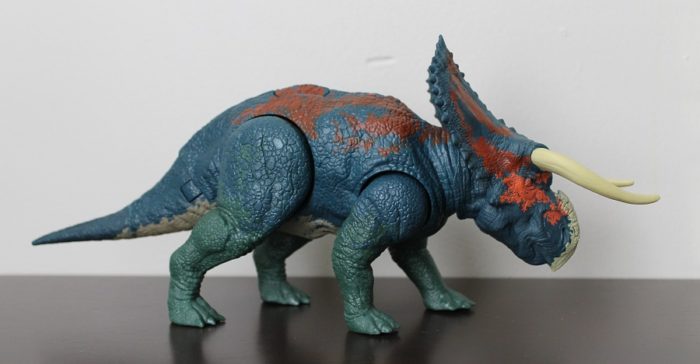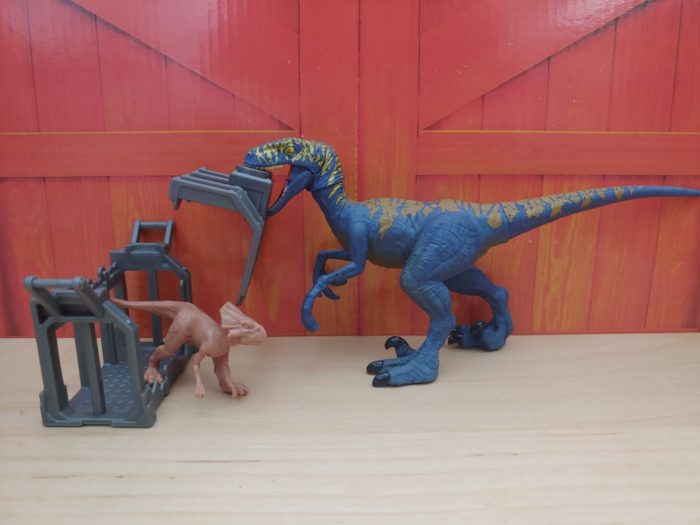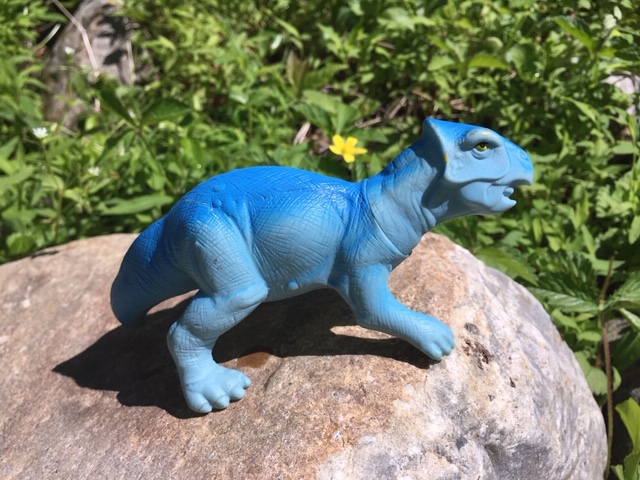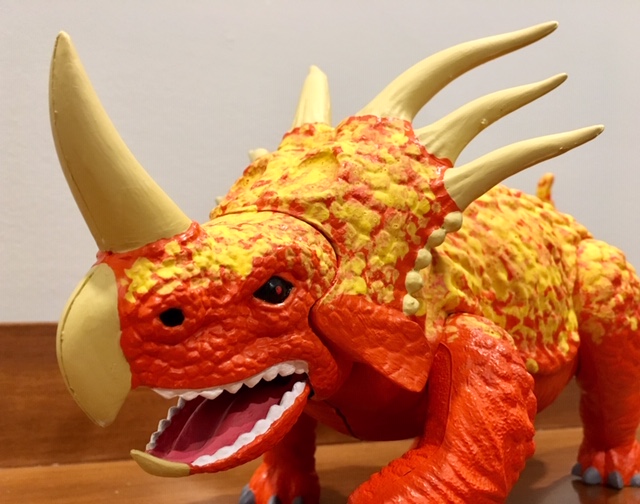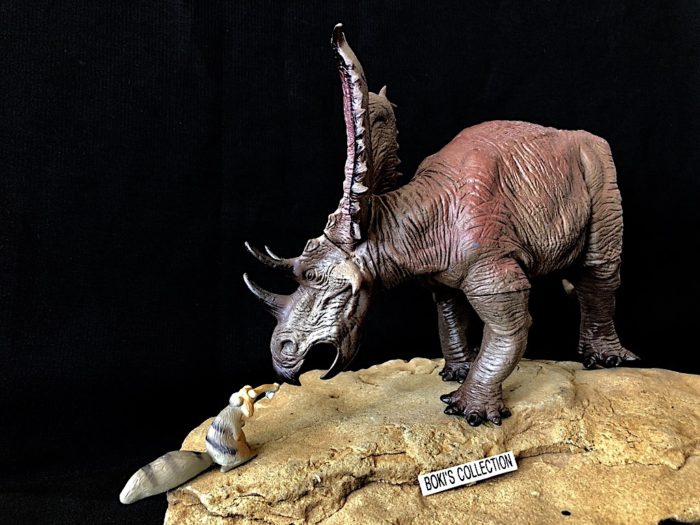Review and photos by Bokisaurus
Part 4 of Kaiyodo Dinoland Natural History review series
Anchiceratops is one of those dinosaurs that seems to have been forgotten in today’s popular culture. Despite being large and having a unique frill, you don’t really hear much about it, let alone see it in documentaries about dinosaurs, or even a short cameo in movies.

